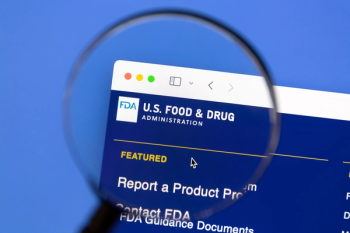
Interchangeable Biosimilars: 5 Reasons to Allow Automatic Substitution
Several states have enacted more stringent laws that still require prescriber notification or authorization prior to dispensing an interchangeable biosimilar.
There are
I recently testified at my state’s House Health Policy Committee hearing on this topic, and much of the conversation focused on automatic substitution.
With more states drafting legislation around biosimilars, I want to discuss why it is important that automatic substitution of interchangeable biosimilars (ASIB) be allowed.
First, let me briefly distinguish between a biosimilar and an interchangeable biosimilar.
According to the FDA, “biosimilars are a type of biological product that is licensed (approved) by the FDA because they are highly similar to an already FDA-approved biological product, known as the biological reference product (or reference product) and have been shown to have no clinically meaningful differences from the reference product.”
The FDA goes on to define interchangeable products as being “both biosimilar to an FDA-approved reference product, and can be expected to produce the same clinical result as the reference product in any given patient. An interchangeable product may be substituted for the reference product without the intervention of the health care provider who prescribed the reference product.”
Despite this, several states have enacted more stringent laws that still require prescriber notification or authorization prior to dispensing an interchangeable biosimilar. Here are 5 reasons why I believe those states made the wrong decision.
1. Interchangeable Biosimilars Have Proven Safety and Efficacy.
The FDA approval process for an interchangeable biosimilar requires documentation beyond what is required for biosimilar-only approval.
Manufacturers seeking interchangeability for their biosimilars must provide data demonstrating that the biosimilar can be expected to produce the same clinical result as the reference product. The data must also demonstrate that safety and efficacy are no different regardless of whether a patient alternates between the biosimilar and the reference product or remains on the reference product. Clinical studies must include an assessment of immunogenicity and pharmacokinetics or pharmacodynamics.
As a result, we can be confident in the safety and efficacy of interchangeable biosimilars.
2. Automatic Substitution of Interchangeable Biosimilars Improves Patient Access.
Why are biosimilars met with such anticipation? Because biologics are expensive.
Utilization management of biologics is critical for payers that are attempting to manage costs. This is often done with step therapy, prior authorization requirements, and/or high co-insurances.
These are barriers for patients attempting to access biologics, which are often viewed as more efficacious than traditional therapies. Patients may have to wait several days or weeks for a prior authorization to be approved.
In cases where prior authorization is denied, patients will have to wait longer for an appeal to be filed. Even with approval, the remaining out-of-pocket costs may prevent a patient from filling their biologic prescription.
In addition to cost barriers, biologics often present new challenges for patients, such as unique side effects and unfamiliar administration techniques like subcutaneous or intramuscular injections. Ultimately, these challenges can prevent patients from staying adherent, either in starting therapy or continuing it. Poor adherence inhibits patients from ever realizing the full potential of their treatment and wastes health care dollars.
With ASIB, there would be one less barrier to patients accessing interchangeable biosimilars.
3. Automatic Substitution of Interchangeable Biosimilars Expands Patient Choice.
Some stakeholders seem to be concerned that without prescriber notification, all prescriptions written for a reference product with an available biosimilar will be filled with the biosimilar.
As pharmacists know, whenever state and federal laws conflict, we have to follow the more stringent of the 2. Under current federal regulations, the only way a non-interchangeable biosimilar can be dispensed is if the prescriber writes specifically for that biosimilar. That means interchangeable biosimilars, if left up to federal regulations, can be dispensed in place of the reference product without prescriber notification.
So, what if a prescriber wants only the reference product to be dispensed? Simply write “DAW” (dispense as written) on the prescription. Patients also have the opportunity to request the brand name at the time of dispensing.
4. Prescriber Notifications Add No Value.
Those opposed to ASIB argue that the prescriber needs to be aware of which product the patient is receiving. I don’t completely disagree, but medication reconciliation efforts and the degree to which electronic health records are connected often don’t support this supposed need.
The bigger question is, “What will prescribers do with a notification that an interchangeable biosimilar was dispensed?” There is an argument that notification is needed for safety, because knowing what a patient is receiving will somehow prevent adverse events, but this is not true.
Recall that the interchangeable designation requires no difference in safety and efficacy for the interchangeable product, and this includes clinical studies that assess immunogenicity. With this requirement, the expectation for an adverse event should be the same regardless of whether a patient receives a reference product or its interchangeable biosimilar.
In other words, there should be no more a concern about an adverse event related to an interchangeable biosimilar than there is for a reference product.
If there is an adverse event, then how will the prescriber know what the causative agent is? How will we monitor the safety of biosimilars if the prescriber has no record of what was dispensed? The answer is: the same way we do today!
The pharmacy is the keeper of the patient’s medication record, and until all health care providers have a shared electronic health record, the pharmacy will be the source of the patient’s full medication history.
Pharmacists will be able to report adverse events from interchangeable biosimilars via FDA’s MedWatch program, just as they do today. I think opponents of ASIB forget that pharmacists do this every day with generic medications.
The last concern to address is the burden on the pharmacy and prescriber’s office. While there aren’t any interchangeable biosimilars available today, a huge burden will be created as biosimilars reach the market and receive interchangeable status.
Keep in mind that biologics aren’t just for rare diseases, so even insulin products will be a target for biosimilar development. Imagine having to call or fax a prescriber’s office every time a prescription for Lantus is written. Now, imagine the staff at that office handling these calls, confirming with prescribers, and updating patient charts. What a waste of resources!
5. Interchangeable Biosimilars Spur More Competition.
Interchangeable biosimilars will bring new options to the market at potentially lower costs. Barriers such as requiring prescriber notification or authorization prior to ASIB will be a barrier to these new entries and hinder the potential for cost savings.
To take the position that interchangeable biosimilars require prescriber notification or prior authorization would be to contend that every generic dispensed requires substitution and doing so would place a burden on pharmacies and prescribers’ offices. This will not improve patient safety or outcomes, but it will impede patient access and consume health care resources that could instead be used doing something of value for patients.
Newsletter
Stay informed on drug updates, treatment guidelines, and pharmacy practice trends—subscribe to Pharmacy Times for weekly clinical insights.























































































































































































































